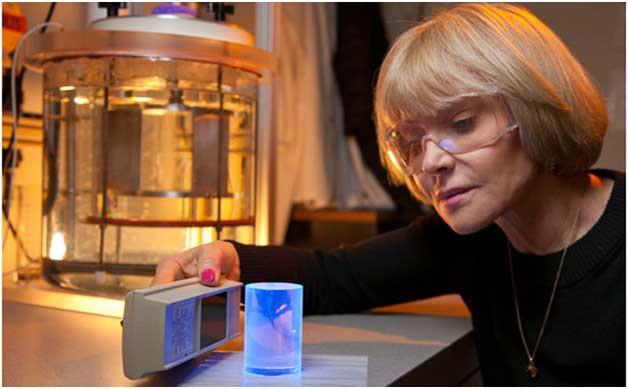It has been established opinion since the 1950s that organic crystals and liquid scintillators can work for detecting neutrons, but that plastics are not suitable for neutron detection.
For years, plastic materials have been used in large, low-cost detectors for portals and high-energy physics facilities, and while they could detect neutrons and gamma rays, they have been incapable of distinguishing one from the other, which is key to identifying nuclear substances such as uranium and plutonium from benign radioactive sources.
Organic crystals serve as one of the best neutron detectors, but the crystals can be difficult to grow and obtain in large volumes. Liquid scintillators present some hazards that hinder their use.
Gas detectors that rely on helium-3, a byproduct of tritium's radioactive decay, have run into problems because the United States now produces markedly less tritium.
However, plastics have more flexibility in their composition and structure than crystals, as well as having none of the hazards associated with liquid scintillators.
Scientists at Lawrence Livermore National Laboratory have developed a plastic that can detect neutrons, something previously thought impossible.
Livermore scientists demonstrated a plastic scintillator that can discriminate between neutrons and gamma rays with a polyvinyltoluene (PVT) polymer matrix loaded with a scintillating dye, 2,5-diphenyloxazole (PPO). They have found that plastic scintillators have a roughly 20 percent finer resolution for neutron-gamma ray discrimination than liquid scintillators.
New plastic that detects neutrons could be far cheaper and more flexible than traditional detectors.
Given the material's low cost, huge plastic sheets could be formed easily into dramatically larger surface areas than other neutron detectors currently used and could aid in the protection of ports, stadiums and other large facilities.
The plastic scintillators may turn out to be best for detecting neutrons once the factors of usage in the field, cost, and performance are taken into consideration
Plastic scintillators could assist in detecting nuclear substances such as plutonium and uranium that might be used in improvised nuclear devices. As well as help in detecting neutrons in major scientific projects.
U.S. Patent 9,309,456
For additional information refer to the following articles:
Livermore Lab makes plastic that detects nuclear material
Lawrence Livermore Laboratory team achieves breakthrough detecting nuclear materials


